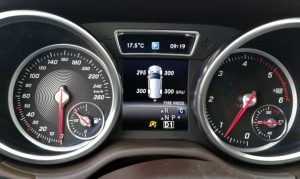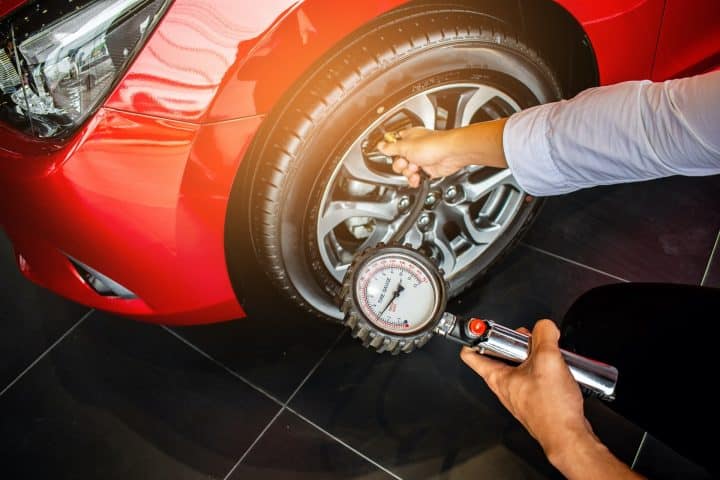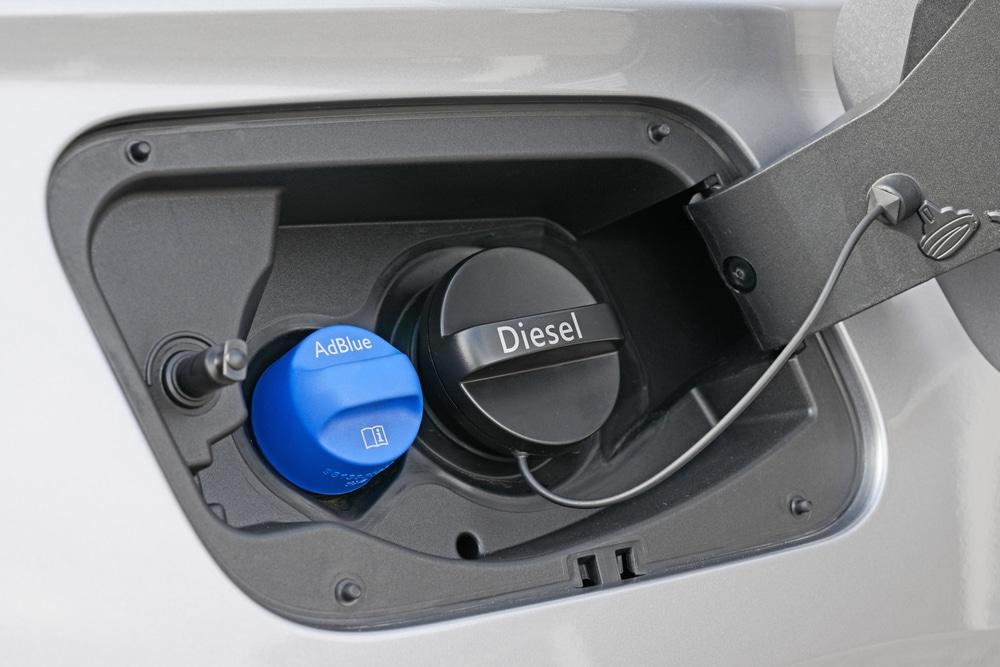Mercedes Tyre Pressure
Correcting tyre pressures is an often-overlooked task. It’s a core part of vehicle maintenance, affecting safety, handling, and fuel economy. You might be looking at your Mercedes tyre pressures and wondering, what is the correct pressure? What other tips do I need to follow when I inspect and maintain my tyres?
In this guide, we answer these important questions about your Mercedes tyres. Read on to find out more!

How Do Under-Inflated Tyres Affect My Mercedes?
An under-inflated tyre will wear out quicker. Your tyres are also less durable when they are underinflated, increasing the chance of a puncture. Roll resistance increases too, as the lack of air increases the force required to turn the wheels. Plus, under-inflated tyres can increase hydroplaning by up to 30% when driving on wet roads.
If you encounter a hazard on the road and need to swerve quickly, an underinflated tyre will be less responsive to steering inputs and reduce grip. A slower reaction equals an increased likelihood of a crash. Therefore your tyres must be properly maintained and inflated at all times.
Quality Car Service is here to help. With a team of expert Mercedes technicians on hand, we offer impartial advice and assistance when it comes to tyres and tyre maintenance.
Recommended Tyre Pressures For Mercedes
Making sure you have the correct tyre pressures for your specific model and model year is key. If incorrect, it could result in punctures and compromise your safety. You may also see different pressures depending on if your vehicle is equipped with winter or summer tyres.
As most Mercedes models house the engine at the front, a higher tyre pressure is required when compared to the rear. This allows for optimum weight distribution.
Checking the recommended tyre pressures for your Mercedes involves looking at the owner’s manual or inside the driver’s door where you will find a sticker. If you are not sure where to look, then reach out to our team at Quality Car Service. We are always on hand to help Mercedes owners with their tyre pressures thanks to our decades of expertise.

Tools You Need To Check Your Mercedes Tyre Pressures
You might not need any tools if your Mercedes has an in-built Tyre Pressure Monitoring System (TPMS). Sensors housed in each wheel will accurately inform you when the tyre pressure drops below the minimum recommended level. Each tyre can be monitored using the driver infotainment or settings menu within the dashboard display.
To find out your tyre pressures, switch on the ignition and use the steering wheel controls. Head to the service menu and select Tyre Pressure by moving up and down using the arrows on the steering wheel. Once you select the option, each tyre pressure will be displayed.
If you do not have a TPMS or you wish to check each tyre pressure manually, you can use a pressure gauge. Pressure gauges can be bought online or in stores or are widely available to buy in fuel stations.
In a safe place, park up your vehicle and remove the valve cap from each tyre by unscrewing it. Use the pressure gauge and place it firmly on the exposed valve to read the pressure. Ensure you have an accurate reading by pushing firmly to avoid air escaping.
From here, compare the pressure you read against the suggested pressures in your owner’s manual or sticker on your driver’s door. If your pressure is too high, then you will need to remove some air by using the gauge to press down gently on the valve. If your pressure is too low, then the tyres are underinflated, use an air pump to pump them up again.
It can be difficult to accurately measure tyre pressures as a lot of factors need to be taken into account. Climate, temperatures, and the way the gauge is used all have an effect and can be inconclusive on the actual measurement of your tyre pressures. This is why we suggest you reach out to Quality Car Service if you are ever in doubt about your tyre pressures.

Is the Tyre Pressure Monitoring System (TPMS) Reliable in my Mercedes?
The TPMS is generally a reliable system in your Mercedes, providing it is correctly set up and calibrated. At Quality Car Service, we help Mercedes owners by setting up and properly calibrating their TPMS in our workshop.
With a team of expert Mercedes technicians, we have extensive knowledge of tyres and tyre pressures. We perform accurate tyre pressure checks and ensure your TPMS is properly functioning when your vehicle enters our workshop. For a peace of mind solution, reach out to us.

How Road Conditions Affect Tyre Pressures – How To Adjust Accordingly.
You might need to adjust your tyre pressures based on climate and temperature. A lower temperature reduces tyre pressure, and a higher temperature increases it. Pressure is measured typically in Bar or PSI (Pounds per square inch) and the recommended pressure for your Mercedes is either found in the owner’s manual or on a sticker inside the driver’s door.
During the day, your tyres can change pressures as you drive. With lower pressure, your fuel consumption increases and lowers the lifespan of your tyre as heat builds up affecting the rubber compound. Also, on hot days, when driving quickly, your tyre pressures increase by up to 10 PSI (or 0.7 bar). Every month it is advised that you monitor your tyre pressures as the temperature changes affect them. If you need advice or assistance, then do not hesitate to reach out to our tyre experts at Quality Car Service.
How To Extend The Lifespan of Your Mercedes Tyres in Seven Steps
Close monitoring of the condition and pressure of your Mercedes tyres will ensure your driving experience is safe and comfortable. At Quality Car Service, we specialise in Mercedes Benz cars and help any customer with their tyres.
Follow these seven tips to maintain your tyres:
- Check your car’s tyre condition: Make sure your tyres are safe by looking for any bulges, cuts, or things stuck in them that might need professional attention. If you find a hole while driving, safely stop and switch to your spare wheel quickly.
- Examine your tyre tread depth: There’s a legal minimum tread depth requirement of 1.6mm. Going below this limit can result in fines of up to £2,500 per wheel and three penalty points on your driving licence. If your tyres are close to or below the 1.6mm legal limit, it’s a good idea to replace them.
- Pick the right tyres: All-weather tyres work well all year round in most places. But in European countries with more extreme weather, you might need to switch between summer and winter tyres.
- Check wheel alignment: Wrong wheel alignment can make your tyres wear unevenly. Uneven wear can damage your tyres, increase fuel use, and affect how your vehicle handles.
- Keep an eye on the maximum load capacity: Overloading your vehicle can make your tyres wear out faster and affect how it handles. Most tyres now have a load index, and it’s important not to go over the specified limit.
- Be careful around kerbs: One of the main reasons for tyre damage is hitting or going over kerbs without being careful. When you park on the roadside, approach kerbs slowly and move carefully to avoid knocking your tyres.
- Encourage good driving habits: Try to avoid sudden braking, accelerate slowly, make smooth movements, avoid bumps and potholes, and slow down when approaching speed bumps.
If you experience any issues or are unsure where to start when checking your Mercedes Benz tyres, be sure to reach out to our expert team at Quality Car Service. Our decades of experience have helped hundreds of Mercedes owners with their maintenance and repair needs. Book your appointment today!



